-
-
-
|
-
-
- New Caledonia Map
-
|
-
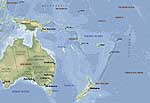
-
-
- Map of
- the Pacific
-
|
|
|
- latest picture: September 3, 2008
- click a picture to see details
|
-
-
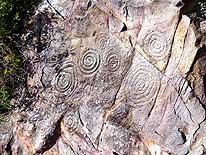
|
-
-
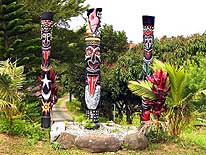
|
-
-
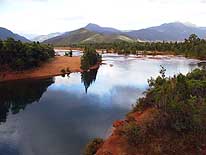
|
- 73
The petroglyphs of Katiramona
- Southeast of Païta are showing circles
- engraved on stones in the riverbed
|
- 74
Carved totem poles mark the
- entrance to a tribal village near Païta.
- They are part of the Kanak culture
|
- 75
The Tontouta River near the international
- airport of New Caledonia with the same
- name – 28 miles Northwest of Nouméa –
- meanders peacefully through the plain
|
-
|
-
-
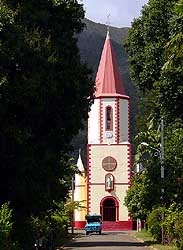
|
-
-
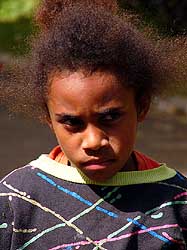
|
-
-
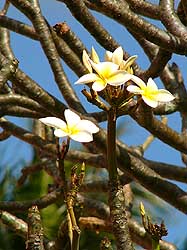
|
- 76
The mission of Thio in St. Philippe
- on the Southern East coast is surrounded
- by beautiful tropical vegetation .....
|
- 77
..... a young girl of the
- mission’s community poses
- for the camera .....
|
- 78
..... Tiaré flowers (Fangipani),
- the symbol of the Pacific, are blooming
- in the mission garden of Thio
|
-
|
-
-
-
-
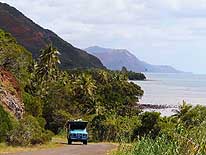
|
-
-
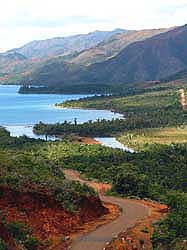
|
-
-
-
-
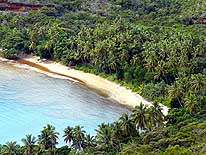
|
- 79
We follow the scenic tropical
- East coast South of Thio .....
|
- 80
..... with the
- many tiny bays .....
|
- 81
..... and palm groves with white
- sandy beaches, inviting to set up a camp
|
-
|
-
-
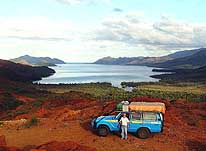
|
-
-
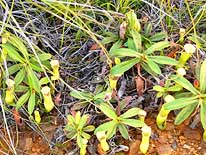
|
-
-
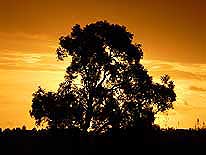
|
- 82
A good mining road near
- St. Gabriel leads us to a perfect
- bush camp with a lovely view to
- the East coast. The red soil
- suggests that the region contains
- a lot of iron, besides other minerals
- like nickel and chrome
|
- 83
..... On the hills surrounding us,
- cruelly exploited by all the various mines,
- the vegetation slowly starts to recover.
- We discover and admire hundreds of
- the carnivorous “Pitcher Plants” [we
- have seen similar plants in Sarawak
- (Northeast = picture line 10 left;
- South = picture line 8 middle) on
- Borneo (= picture No. 44)]
|
- 84
In the plain, the sun is setting
|
-
|
-
-
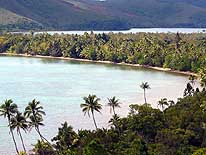
|
-
-
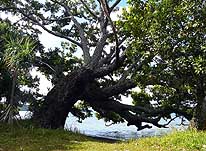
|
-
-
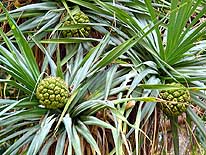
|
- 85
In the South of the East coast
- towards Petit Borindi, the coast is
- blessed with beautiful scenery
|
- 86
A twisted tree with huge branches
- provides the much appreciated shade on
- the black sand beach Southeast of Thio
|
- 87
Pandanus trees are growing
- mostly on coastal areas
|
-
|
-
-
-
-
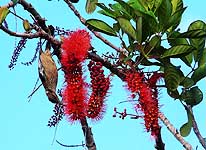
|
-
-
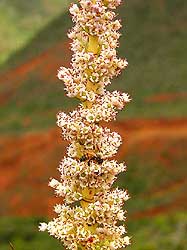
|
-
-
-
-
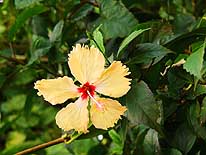
|
- 88
A honeyeater (Friarbird) is feeding on
- nectar of a red bottle brush flower
|
- 89
A bee has settled down on a "Dracophyllum verticillatum" (Dragon-leaf)
|
- 90
A Hibiscus flower, common
- in the subtropics
|
-
|
-
-
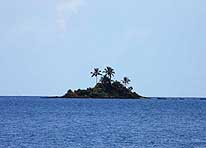
|
-
-
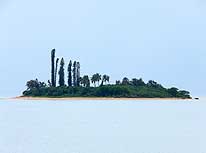
|
-
-
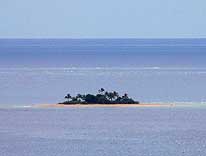
|
- 91
|
- 92
|
- 93
|
- Forgotten and uninhabited „ Robinson Crusoe“ islands often appear far out in
the blue Ocean
|
-
|
-
-
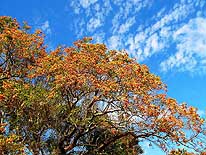
|
-
-
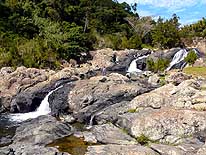
|
-
-
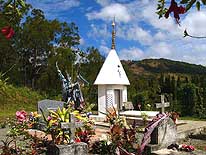
|
- 94
Flowering trees near Canala on
- the East coast. Due to its blossoms,
- often parrots can be seen
|
- 95
The Ciu waterfalls in Canala
- are a refreshing sight in
- their natural setting
|
- 96
Opposite of the Ciu waterfalls
- near Canala we discover this
- indigenous cemetery of Kanaks
|
-
|
-
-
-
-
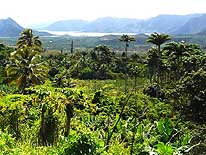
|
-
-
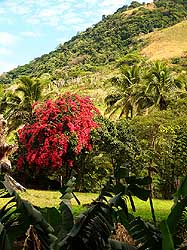
|
-
-
-
-
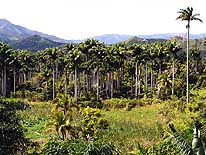
|
- 97
|
- 98
|
- 99
|
- Banana leafs, Araucaria trees, Bougainvillea and towering Royal Palms dominate the
subtropical vegetation in Canala at the East Coast
|
-
|
-
-
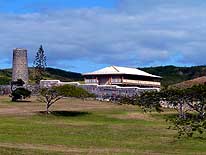
|
-
-
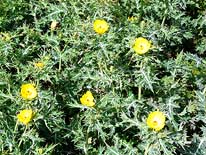
|
-
-
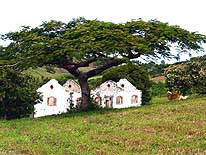
|
- 100
The renovated Fort Téremba
- near Moindou on the West Coast served
- once as prison of deported criminals and
- political detainees from France .....
|
- 101
..... between the ruins of the
- scattered buildings carpets of
- yellow thistles are blooming .....
|
- 102
..... a roofless building in a
- privileged setting under a beautiful tree
|
-
|
-
-
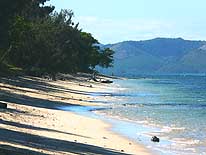
|
-
-
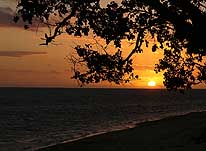
|
-
-
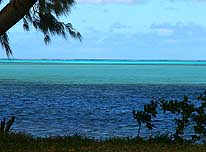
|
- 103
We relax four days at the windy,
- two miles long white sandy beach of
- Poé near Bourail, despite that the
- water is still too cold to swim .....
|
- 104
..... we enjoy
- fascinating sunsets .....
|
- 105
..... and every kind of blue
- and green colors of the sea. The
- colors are changing constantly
|
-
|
-
-
-
-
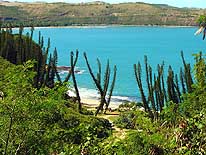
|
-
-
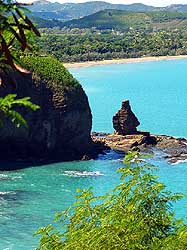
|
-
-
-
-
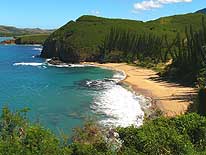
|
- 106
Halfway between Bourail and
- Poé Beach is the romantic Turtle Bay
- (Baie des Tortues) with its towering
- Araucaria trees. It is said that below
- each tree a warrior of the tribe of the
- Bourail-basin is buried vertically
|
- 107
In Melanesian tradition, this cliff
- next to the Turtle Bay, called “Rocher
- le Bonhomme“, is said to be the entry
- point to the underwater kingdom of the
- dead. To gain access to the paradise,
- the deceased must plunge from the cliff
- into the natural water hole. The warden
- then checks that those seeking entry have
- pierced ears before allowing them access
|
- 108
The towering Araucaria
- trees assign Turtle Bay its unique charm
|
-
|
-
-
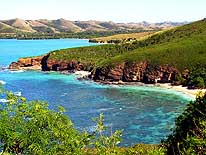
|
-
-
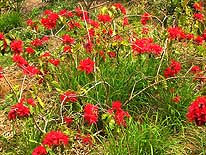
|
-
-
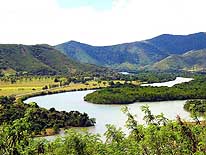
|
- 109
Beside of the Turtle Bay lies the
- “Bay of the lovers“ (Baie des Amoureux).
- The two are connected through
- a small walking path
|
- 110
„Christmas Stars/Winter Roses”
- with their deep red flowers are a special
- attraction between the greenery
|
- 111
The Néra River is
- meandering through the green valley
|
-
|
-
-
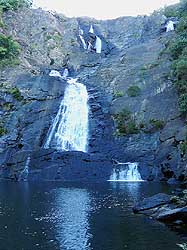
|
-
-
-
-
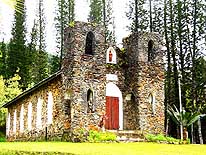
|
-
-
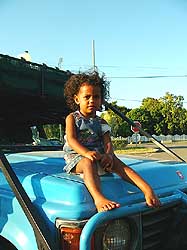
|
- 112
The Bâ waterfall, 8 miles North
- of Houaïlou, plunges through a black
- cliff into a refreshing pool. It must be
- very impressing with a lot of water
|
- 113
A special gem along the East
- coast, 7 miles South of Poindimié, is
- the little church of St. Paul in Pambou
- at the feet of towering Araucaria trees
|
- 114
Janice – a sweet Kanak
- girl – sits on the hood of our
- LandCuiser for a
- remembering picture
|
-
|
-
-
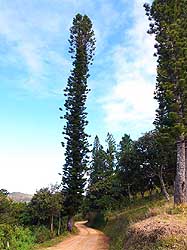
|
-
-
-
-
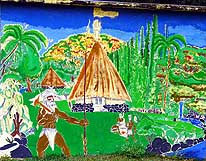
|
-
-
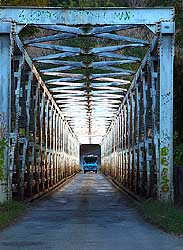
|
- 115
Liliana looks like an ant at
- the bottom of this Araucaria tree.
- They can grow as tall as 100ft
|
- 116
Bus stations in the North are
- wonderfully painted, but
- unfortunately often ruined with graffiti
|
- 117
After Ponérihouen on the East
- Coast, we drive over a long iron bridge,
- originating still from the Second World
- War and nicknamed “Eiffel-Bridge”
|
-
|
-
-
-
-

|
-
-
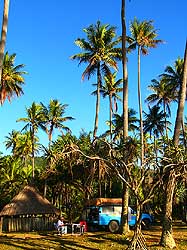
|
-
-
-
-
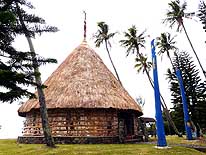
|
- 118
Children at the Tiakan Camping,
- 4 miles North of Ponérihouen, are eager
- to learn about our epic journey .....
|
- 119
..... the setting of the camping
- in a large coconut palm grove at the
- beach with its hot showers is worth
- the fee of US$ 11.50
|
- 120
This traditional Kanak hut
- (Case) is the main attraction of
- Poindimié’s city beach
|
-
|
- More websites from New Caledonia:
-
-
|
- Articles in newspapers about us in New Caledonia:
- Article: "Un voyage sans fin", Les Nouvelles Calédoniennes - August 27,
2008
|
![]()